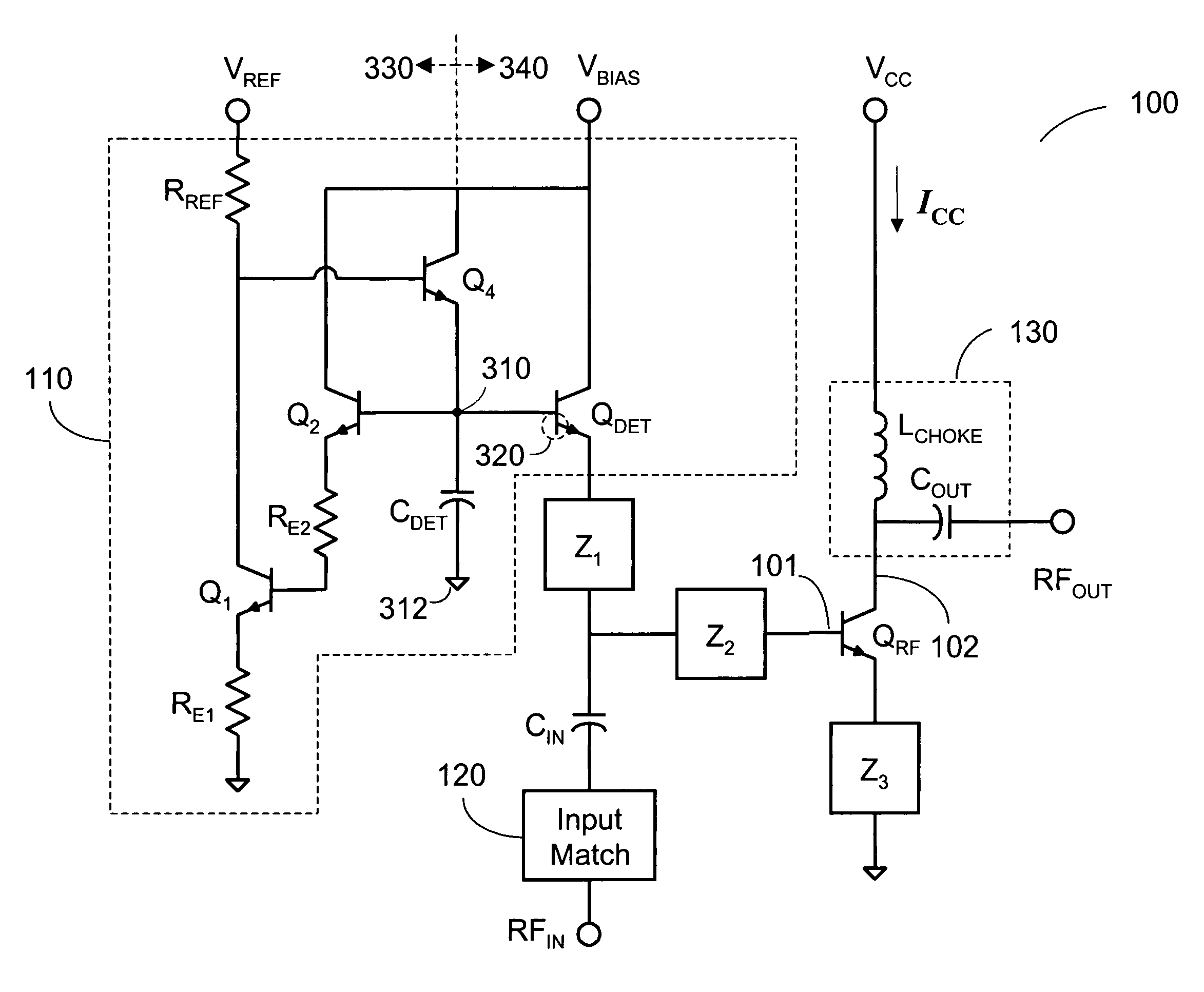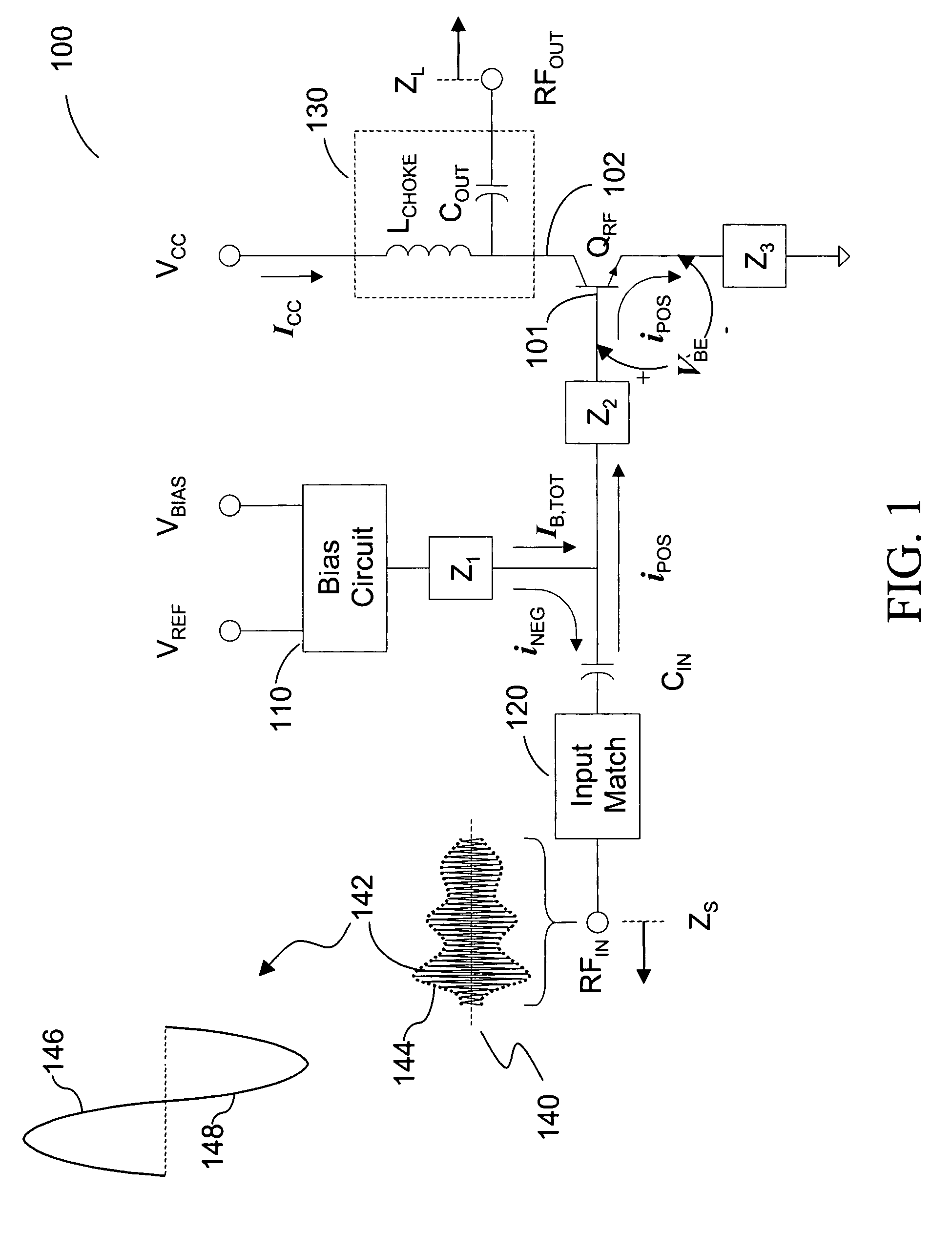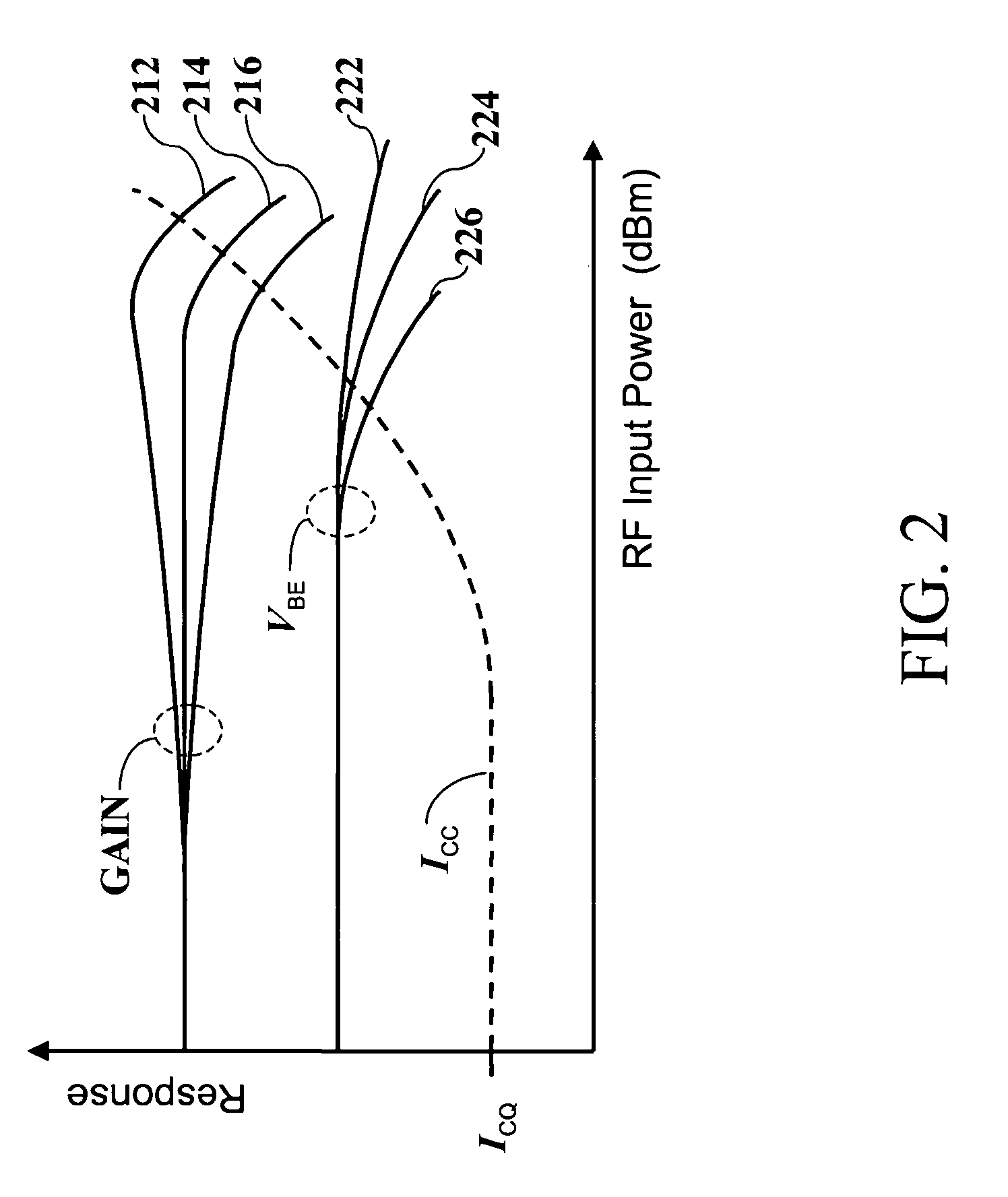Bias circuit for BJT amplifier
a bias circuit and amplifier technology, applied in the field of bias circuits, can solve the problems of degrading the linearity of the amplifier circuit, delaying the demodulation of the signal, etc., and achieve the effect of reducing the odd-order intermodulation distortion and improving the efficiency of reducing the conduction angle operation
- Summary
- Abstract
- Description
- Claims
- Application Information
AI Technical Summary
Benefits of technology
Problems solved by technology
Method used
Image
Examples
Embodiment Construction
[0023]FIG. 1 depicts a simplified block diagram of a single-stage transistor amplifier network (amplifier) 100, according to one embodiment of the present invention. As shown in FIG. 1, amplifier 100 includes an RF power-amplifying device QRF having an input 101 and an output 102, a bias circuit 110 coupled to the input 101 of the power-amplifying device QRF, an input impedance matching section 120 also coupled to the input 101 of the power-amplifying device QRF through a blocking capacitor CIN, an output bias and impedance matching section 130 coupled to the output 102 of the power-amplifying device QRF, and terminals RFIN, RFOUT, VREF, VBIAS, and VCC.
[0024]Terminal RFIN is coupled to the input impedance match section 120 for receiving an RF input signal, terminal RFOUT is coupled to the output bias and impedance match section 130 for outputting an amplified RF signal, terminal VCC is for connecting to a primary power supply voltage used to power the amplifier network 100 and is co...
PUM
 Login to View More
Login to View More Abstract
Description
Claims
Application Information
 Login to View More
Login to View More - R&D
- Intellectual Property
- Life Sciences
- Materials
- Tech Scout
- Unparalleled Data Quality
- Higher Quality Content
- 60% Fewer Hallucinations
Browse by: Latest US Patents, China's latest patents, Technical Efficacy Thesaurus, Application Domain, Technology Topic, Popular Technical Reports.
© 2025 PatSnap. All rights reserved.Legal|Privacy policy|Modern Slavery Act Transparency Statement|Sitemap|About US| Contact US: help@patsnap.com



